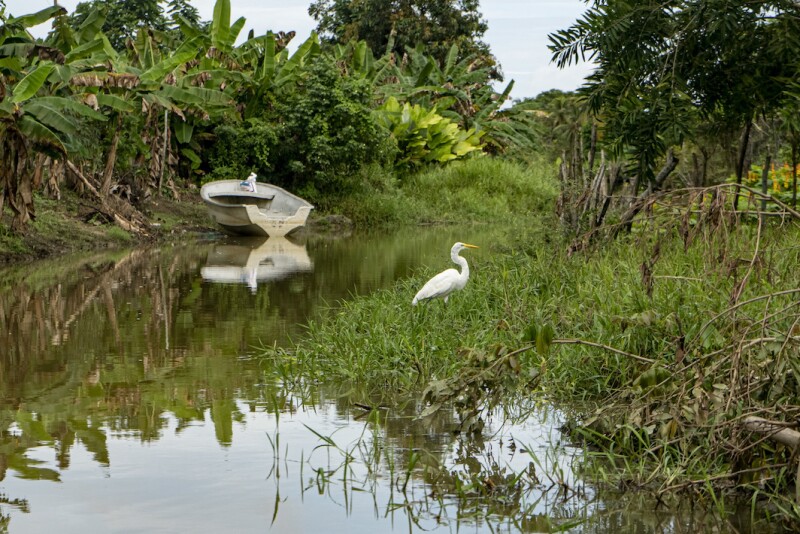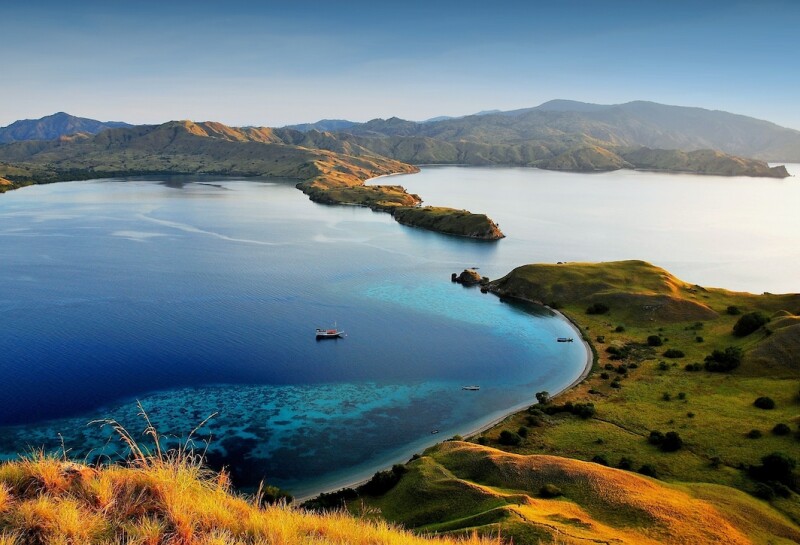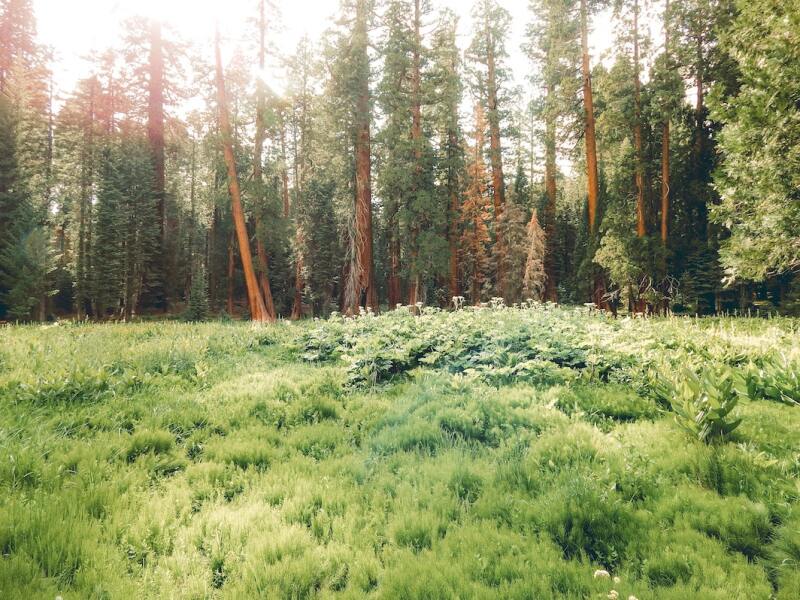If you’ve stood in awe beneath soaring ancient redwoods in California, ventured into a mangrove forest on Colombia’s Caribbean coast, or marveled at tree-dwelling lemurs in Madagascar, you’re lucky enough to have visited one of the world’s biodiversity hot spots. But these extraordinary places, which comprise a mere 2.5 percent of terrestrial Earth, are so much more than just beautiful destinations. They play an essential role in the survival of all forms of life—including humanity—providing everything from nutrients and clean water to the clean air that we breathe.
In 1998, British scientist Norman Myers introduced the concept of biodiversity hot spots, defined as areas with at least 1,500 endemic plant species that can’t be found anywhere else on Earth and that have lost 70 percent of their vegetation—in other words, areas that are both endangered and irreplaceable.
In 2000, the 25 original biodiversity hotspots were expanded to 36 by nonprofit group Conservation International (CI), which has since helped to mobilize more than $1 billion in preservation efforts, an effort that continues under the Critical Ecosystem Protection Fund (CEPF). Recently, scientists have discovered more links between biodiversity and climate regulation, further painting the picture that the existential threat of climate change is inextricably tied to the fate of biodiverse ecosystems.
“[Biodiversity] hot spots are places where you can find a variety of species of flora and fauna, and they’re usually endangered or endemic species that only live in a specific area and nowhere else in the world, so they’re especially important to conserve,” says Maria Claudia Díazgranados, CI’s Colombia-based Blue Carbon director, whose job is to study the relationship between carbon dioxide and ocean ecosystems. “Some of the areas selected as hot spots don’t see tourism because they’re difficult to access, but there are other places where it’s common for visitors to go bird watching or whale watching, for example.”
While Díazgranados and other experts say it’s too early to fully quantify the impact of the COVID-19 pandemic on biodiversity hot spots, the virus has underscored the urgency of protecting these places. Virus outbreaks such as COVID-19 are directly linked to biodiversity crises like wildlife habitat loss.
During the pandemic, many countries—such as India, home to the Asian elephant—experienced an uptick in illegal poaching due to economic hardship among communities and a drop-off in tourists, who double as extra eyes and ears on the ground. Tourism dollars, which also help to fund conservation and antipoaching efforts, have for the most part dried up in wildlife-rich areas such as South Africa’s Kruger National Park, where more than 70 percent of park revenue comes from tourism.
As the world opens up again in the wake of the COVID-19 pandemic, ecoconscious travelers can make a contribution with their pocketbooks if they visit biodiversity hot spots in the right way, adds Díazgranados. Not sure where to go? Travel requirements and pandemic situations allowing, consider a sustainable visit to one of these six biodiversity hot spots around the world.

Cispatá’s mangrove forests help remove carbon from the atmosphere. Their existence is also being threatened by deforestation.
Photo by Daniel Uribe
1. Colombia: Caribbean Mangrove Forests
Tucked within the sparkling, beach-lined Gulf of Morrosquillo on Colombia’s Caribbean coast, Cispatá Bay contains a 27,000-acre wonderland of mangrove trees that grow along the Sinú River, a habitat for endangered needle-nose crocodiles. The local community has been living off of these forests for centuries, but in recent years, the habitat has been threatened by unsustainable harvesting.
That harvesting has a direct link to climate change: Mangroves hold up to 10 times more carbon than terrestrial forests, and when the trees are cut down, that environmentally damaging carbon is released. A new carbon offset program through Conservation International, with the help of Apple, aims to help. The groundbreaking program is the first ever to allow buyers to purchase carbon offset credits that will directly protect the carbon stored in the soil beneath the trees, where 60 percent of the carbon value within mangrove habitats can be found. Revenue supports the creation of sustainable livelihoods like mangrove ecotourism, which is still in its early stages here, according to Díazgranados.
How to visit sustainably
In addition to enjoying the area’s sandy beaches and warm Caribbean waters, ecoconscious travelers can appreciate the resident flora and fauna with tours of the mangrove forest through the Cispata Marina Hotel, located in San Antero, a three-hour drive south of Cartagena.
On the other side of the Gulf of Morrosquillo, the coastal Reserva Natural Sanguaré is a 1,500-acre former cattle ranch turned private reserve with a palm tree–shaded hotel near the town of Rincón del Mar. Observe the more than 200 bird species that live here, or check out the bioluminescent waters of the coastal lagoon.
On the way back to Cartagena, about 25 miles to the south, Las Islas is a seaside collection of thatch-roofed bungalows where you can explore the mangroves via glass-bottomed boat, visit Colombia’s national aviary nearby, or learn about the resort’s coral restoration project.
Protect mangroves from home
Stay informed on mangrove conservation through the Global Mangrove Alliance; its newsletter will point you to news and actionable ways to help protect mangroves from home, including how to buy sustainable seafood.

Komodo National Park encompasses the islands of Rincar, Pandar, and Komodo as well as 26 smaller ones.
Photo by Brendan Drewniany
2. Indonesia: Komodo National Park
The archipelago of mostly Indonesian islands between the Australian and Asian continents teems with life; it includes Indonesia’s famous Komodo National Park, a UNESCO World Heritage site consisting of three major islands and a smattering of smaller ones. These islands are home to nearly 6,000 Komodo dragons, which can grow up to 10 feet and live nowhere else on the planet. Surrounding their rugged island habitat are azure, nutrient-dense waters, rich with coral, 10 species of dolphin and 5 species of turtle, plus dugongs (a relative of the manatee), blue whales, and sperm whales. This fragile ecosystem is still vulnerable to illegal poaching and fishing.
How to visit sustainably
An ecominded trip from Black Tomato called Conservational Discovery of the Land of the Komodo Dragon ventures into Indonesia’s Komodo Islands on a luxurious seven-suite yacht. The week-long itinerary includes hands-on conservation projects alongside Conservation International scientists, such as tagging manta rays. The scientists are also available to share their expertise as you explore different habitats, whether you’re diving with sea turtles and sharks, visiting Komodo National Park’s resident Komodo dragons, or exploring pink-sand beaches made from coral.
Defend Komodo dragons from home
Indonesia-based Komodo Survival Program, a nonprofit group that researches and monitors wildlife in the islands and builds community education and awareness, offers tips and advice on responsibly visiting the islands; the group also accepts donations.

Located along North America’s Pacific Coast, only about a quarter of the California Floristic Province remains in pristine condition.
Photo by Sarah Brown on Unsplash
3. United States: California Floristic Province
The California Floristic Province is an old-growth temperate forest that starts at the Klamath River in Oregon and extends well into Northern California. Many of the world’s tallest trees grow there—some of them close to 300 feet high. There are nearly 3,500 species of plants in this region and more than 60 percent are native—yet about 75 percent of the original habitat is gone. Both the giant sequoia, which is the world’s largest living organism, and the towering coastal redwood, are endangered; the region is also a breeding ground for the critically endangered California condor. Unprecedented numbers of wildfires related to climate change threaten these forests, along with habitat encroachment and pollution.
How to visit sustainably
There are many ways to access this biodiversity hot spot in Northern California. You can start in Redwood National Park with a picturesque hike on the 1.5-mile Lady Bird Johnson Grove Trail, where ancient redwoods tower. Or head to Prairie Creek Redwoods State Park to tackle the mile-long Fern Canyon Loop Trail, which winds through canyon walls lined with green ferns and is home to a herd of Roosevelt elk.
Base yourself out of one of the two Victorian rental cottages or 33 guest rooms, some with fireplaces and whirlpool baths, at Carter House Inns in the charming coastal town of Eureka. For postcard-worthy Pacific Ocean views, check into the Lost Whale Inn, set along a picturesque bluff just 15 minutes by car from the entrance to Redwood National Park.
Support old-growth forests from home
One of America’s pioneering conservation organizations, Save the Redwoods League has been helping to protect the world’s last redwood stands from extinction for more than a century. Learn more about its efforts and donate to specific causes, including a Wildfire Fund that works to protect the forests during wildfire season.

Daintree Rainforest is one of the most biologically diverse rain forests in the world and is home to a significant portion of Australia’s animal population.
Courtesy of Silky Oaks Lodge
4. Australia: Daintree Rainforest
The noncontiguous forests in eastern Australia, which include coastal and mountain range habitats, elevated plateaus, and fresh bodies of water, were designated a biodiversity hot spot in 2011; they contain more than 2,100 native vascular plant species but are threatened by land development and non-native species, resulting in an overall habitat loss of 77 percent.
One of these habitats, the 180-million-year-old Daintree Rainforest, is the world’s oldest tropical rain forest. Located in North Queensland, the rain forest is home to the Indigenous Kuku Yalangi people and to species that only exist here, including Bennett’s tree kangaroos, the lesser sooty owl, and the arboreal Boyd’s forest dragon, unique for regulating its body temperature with air.
How to visit sustainably
Hidden within 80 acres of dense rain forest on the edge of Daintree National Park, Silky Oaks Lodge is a collection of 38 veranda-lined tree houses and riverside accommodations that will reopen after a major renovation on October 1, 2021. From there, the lodge can arrange for guests to easily enter the rain forest for Indigenous culture walks with the Kuku Yalangi people or a river safari to spot resident crocs and hundreds of bird species. Pair the rain forest with a day trip to the nearby Great Barrier Reef via catamaran.
Support Daintree from home
For more than 20 years, the Australia-based nonprofit Rainforest Rescue has worked to preserve the continent’s rain forests, including the Daintree, through efforts such as planting, education, and buying privately owned land to expand the forest footprint. Sign up for its newsletter to stay informed, or donate to conservation efforts.

Lemurs are unique to Madagascar and can be found in virtually all of the island’s ecosystems.
Photo by Hajakely/ Shutterstock
5. Madagascar and the Indian Ocean Islands
This biodiversity hot spot, which includes Madagascar, Mauritius, the Comoros, and the Seychelles, is home to an astonishing 11,200 endemic plant species. In Madagascar, famous for its lemurs, close to two dozen new mammal species and subspecies have been discovered over the past 15 years. The island is also home to six of the world’s nine species of baobab trees, and three of those six are endangered. Close to 60 percent of the more than 500 bird species found in this hot spot exist only here, but they’re under threat: 55 endemic species are endangered, and 32 are already extinct. (In Mauritius, the native flightless dodo bird famously became extinct in the 17th century.) Deforestation and commercial exploitation of native species are among the biggest threats to the area.
How to visit sustainably
About 95 percent of this hot spot falls within Madagascar, and the sustainability driven, U.K.-based Steppes Travel can arrange an eye-opening trip along the western part of the island. A Steppes guide will lead you to Avenue of Baobabs, composed of the country’s largest freestanding baobabs, before organizing a cultural excursion to see the erotic carvings and tombs of Morondava, the geographical heart of the country’s Indigenous Sakalava culture. Continue north to visit the tropical dry Kirindy Forest to get a glimpse at the cat-like fossa, or Malagasy civet, which is native to the island.
Help out lemurs from home
The Lemur Conservation Network offers information on Madagascar’s lemur populations and offers ways to donate, volunteer, or visit. The group also provides tips on how to protect lemurs from afar, such as speaking out against their exploitation as pets, and avoiding furniture built from endangered rosewood, a slow-growing tree that provides crucial habitat for them.

The endangered red colobus monkey can be found in the forests of Zanzibar, Tanzania.
Photo by o.terenteva/Shutterstock
6. Tanzania’s Coastal Forests
The most well-known landscapes in East Africa are those that comprise the vast Serengeti-Mara Ecosystem, home to millions of migrating wildebeest, lions, hyenas, and elephants. But the fragmented coastal forests of Kenya and Tanzania are also home to incredible biodiversity, including endangered primates such as the red colobus monkey. The region contains more than 4,000 vascular plant species, 43 percent of which are native, including eight endemic wild coffee species. Human pressures such as agriculture and urbanization are putting these habitats at risk, and only 10 percent of the original vegetation exists.
How to visit sustainably
Ecoconscious safari expert andBeyond can arrange a safari in Tanzania’s remote Selous Game Reserve. Base yourself in one of the charming, stone-and-thatch accommodations of Beho Beho Camp while in search of wildlife encounters with the endangered African wild dog, cheetah, and black rhinoceros; you can also try a walking safari, as Selous is one of the few reserves in the country that allows hiking on foot.
Tack on a trip to Zanzibar—an archipelago 22 miles from mainland Tanzania—where the Jozani Forest Reserve is home to the red colobus monkey and the critically endangered Aders’s duiker, one of Africa’s rarest antelope species. In 2005, andBeyond Mnemba Island, off the northwest coast of Zanzibar, started a conservation program that introduced 5 Aders’s duiker antelope to the private island, and today, 15 antelope live there.
Support coastal forests from home
The U.S.-based African Rainforest Conservancy helps to fund grassroots-level conservation projects, collaborating with Tanzania Forest Conservation Group, Tanzania’s largest NGO working on forest preservation. Learn more about the group’s various projects, which range from antipoaching initiatives to sustainable charcoal, and donate to the cause.











